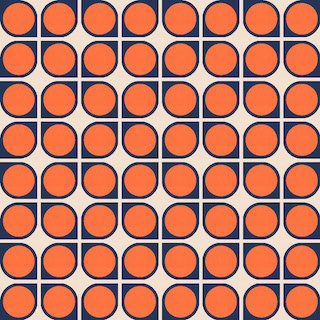
Sunday sketch #411
This week’s sketch might be a little impractical in terms of making an actual quilt, but it’s a fun exploration of orange peels.


This week’s sketch might be a little impractical in terms of making an actual quilt, but it’s a fun exploration of orange peels.

I’ve been using circles a lot lately, and after a while I just wanted to see what they’d look like on their own. Kinda fun!

This week’s sketch was a logical progression from last week’s (and the week before). It looks familiar; I’m not sure I’ve seen it as a quilt design, but I feel like we’ve probably all seen something like it as a surface design somewhere.